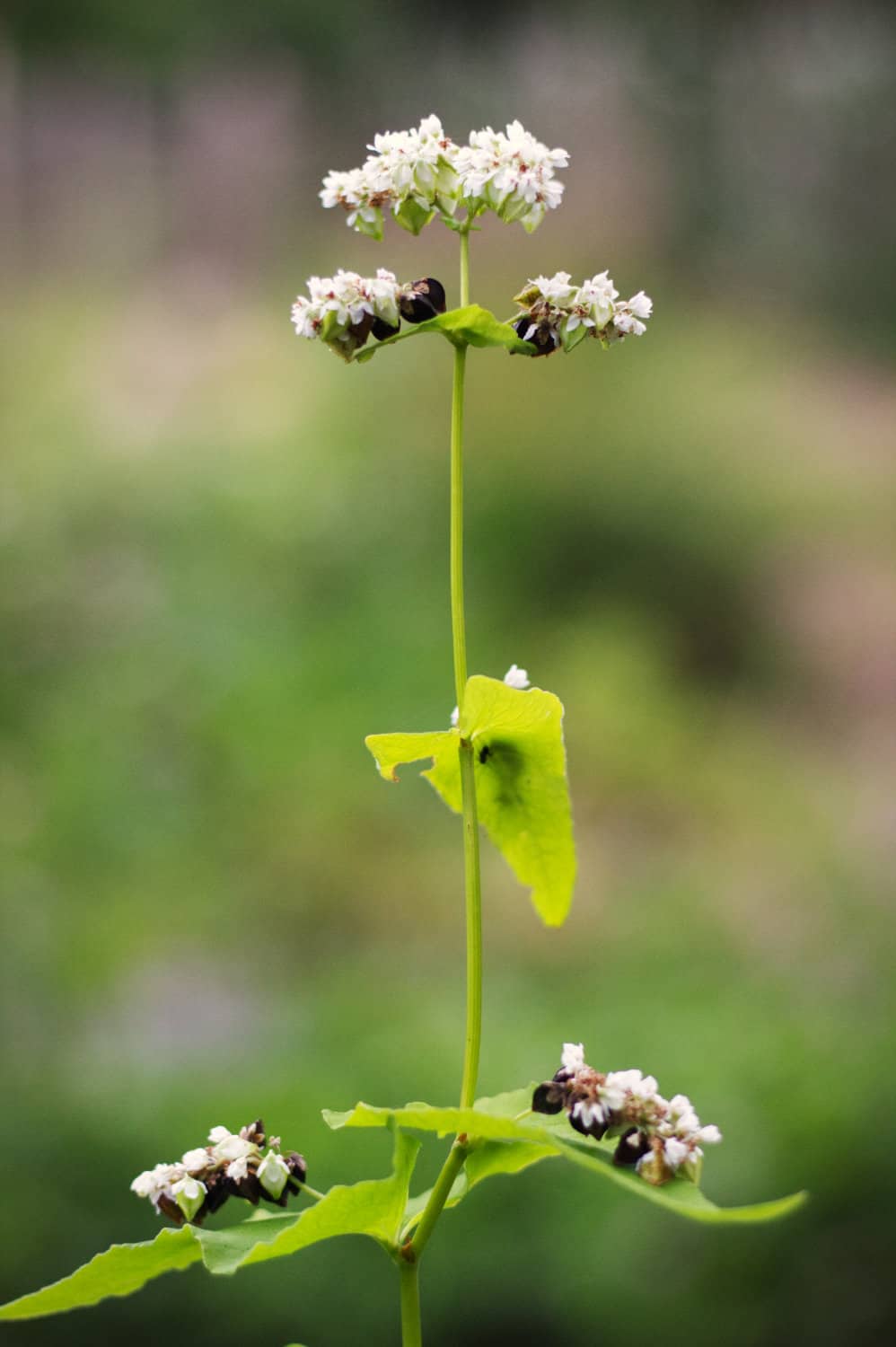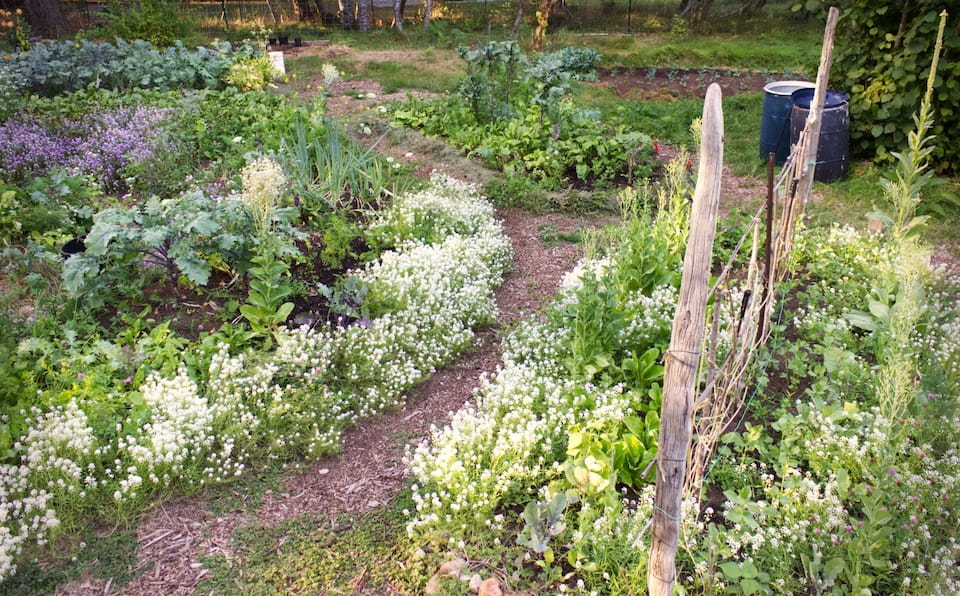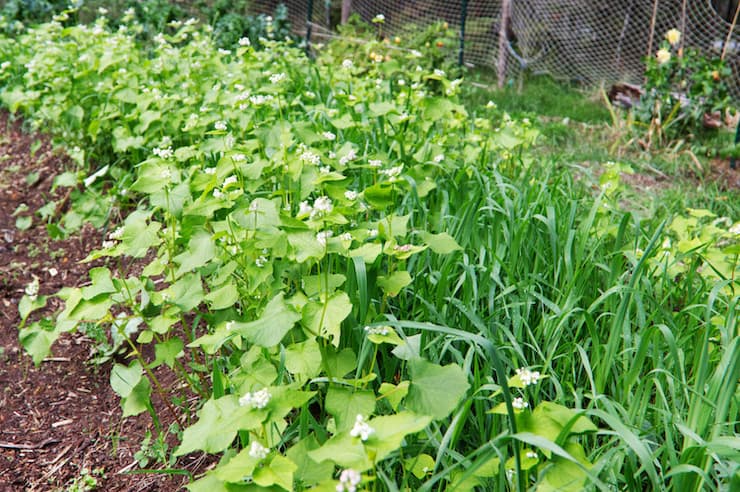Buckwheat, despite its name, is not a type of wheat but rather a member of the Polygonaceae family. It is closely related to rhubarb and sorrel and was first cultivated in inland Southeast Asia around 6000 BCE before spreading to Central Asia, Tibet, the Middle East, and Europe, and eventually reaching North America by the 15th century.
Buckwheat spreads rapidly due to its adaptability to diverse climates and soils. Having a cultivation history dating back thousands of years in China, it has become not only a crop but also a symbol of healthy living. Its nutrient-dense seeds, processed into a grain post-harvest, have now become a staple ingredient in many diets across the globe.1
Buckwheat’s Ecological Role
Southwest China is the diversity centre of buckwheat with abundant wild species.2 Due to its ability to thrive in poor soils it has an extensive global spread. It serves as both an edible grain and green manure within food systems, and integrated in agricultural practices it can offer both soil enrichment and ecological benefits.
Quickly filling a barren bed and preventing soil erosion, seed germination to full bloom can occur in as little as three weeks. The resulting profusion of clustered white flowers attracts a wide range of pollinators, including bees, butterflies, and hoverflies. This makes it an excellent companion plant in gardens and orchards, leading to increased crop yields.
Buckwheat as a Cover Crop:
Buckwheat (Fagopyrum esculentum) serves as a versatile and beneficial cover crop in garden rotations, offering rapid growth and green manure benefits within a relatively short period. Its adaptability allows for seamless integration between spring and fall crops, enhancing soil health and supporting pollinators.3
Mineral Accumulation: Buckwheat is known for it nutrient uptake of phosphorus, storing it in pant tissues and decomposition. Buckwheat also accumulates calcium in its tissues, particularly in its leaves and stems. Calcium helps to stabilize soil aggregates and improve drainage. It is essential for cell wall formation in plants and contributes to overall plant vigor and disease resistance. 4
Soil Improvement: Buckwheat’s extensive root system helps break up compacted soils, improves soil aeration, and enhances nutrient cycling. When incorporated into the soil, residues decompose rapidly and enrich the soil with organic matter releasing nutrients for subsequent crops.
Weed Suppression: The fast-growing nature of buckwheat and dense foliage allows it to outcompete weeds. It’ dense growth not only protects soil from erosion but also reducing weed pressure in agricultural fields and garden beds. It also produces an allopathic compound that inhibits the germination of weeds.
Considerations:
Climate and Growing Conditions: Buckwheat performs best in cooler climates with adequate moisture. Plant after the last frost date, typically in late April to May in regions like the Pacific Northwest. It is sensitive to extreme heat and drought, so growers in warmer regions may need to plant earlier in the season or provide irrigation if necessary. Growth remains vigorous throughout the summer but slows down in September.
Timing of Planting: Buckwheat is a fast-growing crop that matures in about 70 days. Typically sown in late spring or early summer after the risk of frost has passed, planting too early or late can result in poor germination or reduced growth. Seeds typically germinate within 1-3 days and should be broadcast and lightly scratched into the soil. Sow at a rate of 2-3 pounds per 1000 square feet, adjusting rates higher when seeding late spring or summer vegetables.
Seedbed Preparation: While buckwheat can tolerate poor soils, it performs best in well-drained, fertile soils with a pH between 5.5 and 7.5. It tolerates low fertility and soils rich in organic matter but may struggle in heavy clays or compacted soils. Ensure adequate irrigation in hot and dry regions to prevent drought stress.
Management: Allow buckwheat to flower for pollinator support, but prevent seed formation unless intentional. If left it will self-seed in subsequent seasons. Incorporate buckwheat into the soil as it begins to flower to maximize soil organic matter. Chop it lightly with a spade when preparing for the next crop rotation. It decomposes rapidly, but allow approximately one week before planting new crops for optimal soil conditioning.
Soil Phytotoxicity: Buckwheat produces allelopathic compounds, such as fagopyrin, which can inhibit the germination and growth of other plant species. 5 Research has identified alkaloid compounds like piperidine and piperidene methanol in buckwheat shoots. These effectively inhibit root growth in newly germinated weed seeds, particularly impacting common amaranth and barnyard grass.6 While this allelopathic effect can help suppress weeds, it may also have negative impacts on the growth of certain crops if planted in succession. Proper crop rotation and careful consideration of planting sequences can help mitigate potential phytotoxicity issues.
Susceptibility to Diseases: Buckwheat is susceptible to various fungal diseases, including powdery mildew, damping-off, and buckwheat blast. These diseases can affect plant health and reduce yield if left untreated. Implementing crop rotation, using disease-resistant varieties, and practicing good sanitation measures can help manage disease pressure.
Climate Adaptation: Tartary buckwheat, mainly grown in South China and other regions, demonstrates adaptability to diverse climatic conditions. Its cultivation contributes to food security and agricultural diversity in these areas.7
Buckwheat For Growers
Buckwheat is a versatile and valuable cover crop that offers numerous benefits for soil health, weed suppression, and pollinator habitat. By incorporating it as a cover crop into agricultural systems, farmers and gardeners can improve soil fertility, reduce reliance on synthetic inputs, and support biodiversity. For successful integration, careful consideration of climate, growing conditions, and timing is essential to maximize the benefits of buckwheat as a cover crop.

Buckwheat Benefits
Pollinator friendly: Blooms all summer into fall attracting divers pollinators for an extended period.
Nutrient Uptake: Buckwheat’s fine roots efficiently access phosphorus in the soil, which is then stored in the plant’s tissues. When buckwheat residues return to the soil, the stored phosphorus becomes available for the next crop, enhancing soil fertility
Soil Aeration: The roots of buckwheat plants help loosen the topsoil, improving aeration and allowing for better water infiltration.
Soil enrichment: Buckwheat can grow on poor soils. If cut down before seeding, it decomposes rapidly, enriching the soil with humus, adding phosphorus and calcium.
Soil Protection: The dense growth of buckwheat protects the soil from erosion and helps conserve soil moisture, maintaining soil health
Weed suppression: Buckwheat grows quickly, smothering weeds and preventing their growth, while also producing toxins that inhibit weed germination.8
Cautions: Buckwheat’s allelopathic compounds can inhibit growth of other plants. While this is desired for weeds it can impact successive crops if rotation and companionability is not taken in to account.
- https://www.researchgate.net/publication/354617273_Modelling_the_potential_ecological_niche_of_domesticated_buckwheat_in_China_archaeological_evidence_environmental_constraints_and_climate_change
- https://www.ncbi.nlm.nih.gov/pmc/articles/PMC8538749/, https://www.tandfonline.com/doi/full/10.1080/10408398.2023.2249112
- https://link.springer.com/article/10.1007/s00334-017-0649-4
- https://dirtsecrets.com/2015/06/buckwheat-green-manure-summer-garden/
- https://mbbuckwheat.ca/nutrient-uptake-study
- http://www.regional.org.au/au/allelopathy/2005/2/addenda/2751_iqbalzi.htm
- http://www.hort.cornell.edu/bjorkman/lab/buck/NL/sept03.php
- https://www.sciencedirect.com/topics/agricultural-and-biological-sciences/tartary-buckwheat
- https://www.multitanks.com/en/blog/use-buckwheat-as-green-manure-n102

